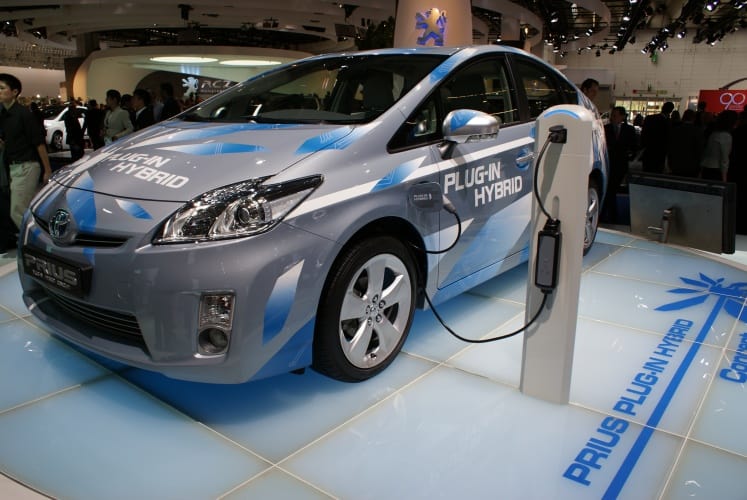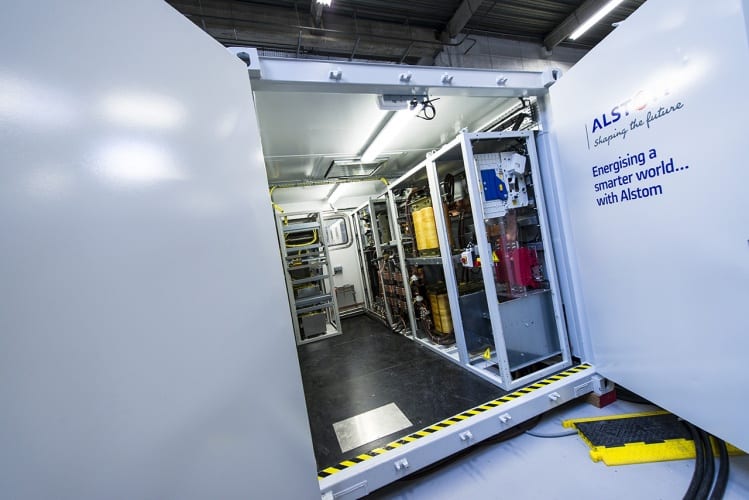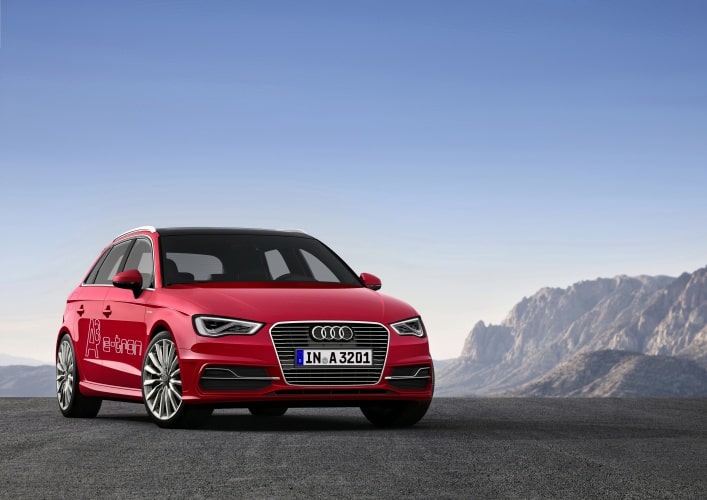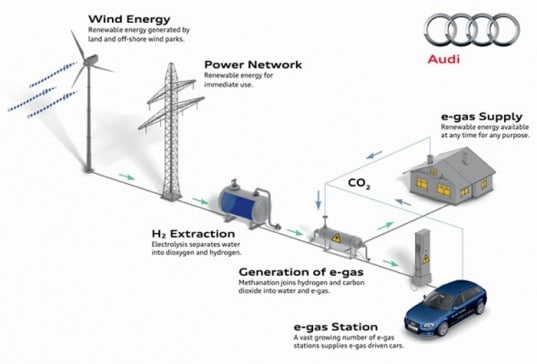Electricity is at the focus of several of the most pressing debates facing the engineering sector at the moment: the technologies used to generate it and how best to deploy those to reduce carbon emissions and conserve reserves of fossil fuels as they begin to dwindle and the costs of extracting them rise ever higher; distribution, and how to direct its flow in the best way to reduce waste and ensure that supplies always meet demand; and its increasing use in transport.

While the first two are often linked, electrification of transport is most often seen as a separate topic. Electricity generation and distribution have always been seen as integral components of the energy industry and are often discussed together. Transport — at least, transport over the ground — is the province of the automotive industry, which is so large and complex that it’s seen, if not in isolation, then only as a part of the industrial make-up of whole countries and affected by global trade and the issue of skills, but not overly linked to any other industrial sectors.
A number of figures in both industries and academia are starting to take a different view. As electricity gains importance as the prime mover of cars, trucks and buses; and the idea of it replacing petrol and diesel as the most important element in road transport begins to look a real prospect, society must start to consider electricity and transport as aspects of the same set of issues.
”If everyone in a town wanted to charge their cars at the same time, you’d probably blow the local grid
Jürgen-Friedrick Hake, Jülich Forschungszentrum
Some of the reasons for this are technical: as more people and services switch from internal-combustion vehicles to electric, the generators have to generate more electricity and at different times, to ensure that there’s enough electrons flowing when vehicles need charging. ‘At the moment,’ said Jürgen-Friedrich Hake, ‘if everyone in a town wanted to charge their cars at the same time, you’d probably blow the local grid’. Hake is a member of the Institute of Energy and Climate Research at the Jülich Forschungszentrum, a multidisciplinary research centre near Cologne.
Other reasons are technological: electric cars, of course, contain batteries and these have more than one use. Private vehicles, especially, spend most of their time parked; and if electric vehicles are habitually kept plugged in, then their batteries can be used, individually or as an array, as part of an energy storage system, helping to back up areas that are dependent to any significant extent on intermittent renewables or taking the strain off generating facilities when they need to meet a peak power demand.
This is a challenge for both automotive and energy sectors, Hake and his colleague Jochen Linssen told The Engineer. If road vehicles are to be seen as part of the ‘energy system’ — a term they use to cover energy and everything it touches — then manufacturers clearly haven’t got it quite right yet, as electric vehicle sales are still lagging somewhat behind predictions for market penetration. Putting it into an academic terminology, Hake said that ‘energy systems are… a strong interrelation of technological and social elements, such as regulations, cultural values, social practices, as well as interests and relationships of the actors involved’. We’re in the middle of an energy systems transformation because global energy trends are not sustainable; because energy use is a main driver of climate change and because of a need for assurance of energy supply as global demand rises — the latter continuing as population levels climb and previously impoverished communities see improvements in lifestyles. The overall goal of that is ‘an environmental, economical and social well-balanced global energy supply system’.
To visualise this, Hake suggests a triangle with economy at one vertex, environment at another and society at the third. Electric vehicles can be plotted in terms of how well they fulfil each set of criteria, with the ideal spot being the centre, an equal distance from each vertex. At the moment, he said, electric vehicles are expensive, putting them too far from the economy vertex, and seen as not having enough capacity for most people’s usage, pushing them away from the society point. ‘This can be overcome if they’re seen as a desirable status symbol,’ he said. ‘Teslas are very expensive, but people want them; they aren’t having a problem with sales.’ And as charging infrastructure is established and people get used to using fast-charge top-ups on long journeys, that societal shortfall will become less important. ‘We can see this happening already,’ said Linssen. ‘These charging points are not an unusual sight anymore.’
”It’s no good having an electric car whose battery can’t store enough electricity to power the car, and can’t supply it with the necessary characteristics
Tim Green, Energy Futures Lab, Imperial College
Another sticking point is the capabilities of the batteries themselves. ‘EV batteries are designed to power EVs; they aren’t designed for the sort of charge-discharge cycles that elements of a grid-scale electricity storage system need to withstand,’ said Prof Tim Green, director of Imperial College London’s Energy Futures Laboratory, whose own research is concerned with the future form of electricity networks. ‘If you force them into an application they aren’t designed for, you’ll end up compromising their performance. It’s no good having an electric car whose battery can’t store enough electricity to power the car, and can’t supply it with the necessary characteristics.’

EV battery technology is still developing, with further generations of technology expected; the Energy Futures Lab has research projects on new battery chemistry, including one where it is working with Williams Advanced Engineering (see Interview, p32), which designed the battery for the Formula E racing cars’ opening season. ‘It’s a problem that could be addressed with the right battery management systems and power electronics,’ Green said. ‘While you might imagine a full car park acting as a battery during the day, it might be better to imagine a different scenario. There is a possibility of operating battery swaps rather than recharging; in which case swapping-stations would have racks of batteries on charge and fully charged, waiting to be swapped into waiting vehicles.’ Such a system is very similar to grid-scale batteries such as those used by companies such as Alsthom in its smart-grid systems, which we featured in The Engineer earlier this year; these consist of arrays of individual battery units tacked together in a container equipped with inverters to convert AC to DC and back again — they are sometimes referred to as gridbanks — so the correct software and hardware to protect the batteries in an energy-storage configuration could be built into them more easily than into cars, Green said.
“We might see the emergence of a new player, which would buy electricity from the grid and supply it to chargers. That’s who car owners would pay when they charge their cars
Jürgen-Friedrick Hake
Another question is how the commercial model might work. If vehicles are an integral part of an energy system, then who is responsible for the infrastructure? Who gets paid, and by whom? Hake and Linssen think it likely that a new economic sector might emerge. ‘It’s unlikely to be automotive companies, and it isn’t a clear part of the job that distributors currently do,’ Hake said. ‘So we might see the emergence of a new player, which would buy electricity from the grid and supply it to chargers. That’s who car owners would pay when they charge their cars and it would also sell electricity back to the grid when the car batteries are in discharge mode. Of course you also need to manage when cars are charged to take advantage of prices and capacity, which we know is a matter for smart grid operators; this new actor in the sector would be a part of that.
In depth
Electricity can be used in a process that converts carbon dioxide into fuel
While redesigning the grid to enable the most effective use of electric vehicles is one way to integrate electricity into transport, it only affects EVs, which, as we have stated above, make up only a small proportion of cars on the road at the moment. Another way, which embodies a different approach to energy storage, is to use electricity in a process that converts carbon dioxide into methanol or diesel-like hydrocarbons that can be used to fuel conventional vehicles
One such project is under trial by Air Fuel Systems, a company based in Peterlee in County Durham.
Air Fuel Systems has designed a process that begins by blowing air up a tower containing a carbon hydroxide solution. This scrubs the carbon dioxide out of the air, converting hydroxide into carbonate. To recover the CO2 and divert it into the chemical process, an electric current is passed through the carbonate solution. The CO2 is then converted into hydrocarbon by reacting it with water in a well-known industrial process called the Water-Gas Shift reaction that creates a mixture of carbon monoxide and hydrogen known as syngas.

Processes to turn syngas into fuel have been developed throughout the 20th century; the best-known is the Fischer-Tropsch process; although Mobil developed another one where the syngas is reacted to convert it into methanol and this is then used to make fuels.
AFS has been running a pilot plant in Peterlee since 2012 and plans to scale up to 1-tonne/day and 1,000-tonne/day. It is also running a demonstrator whereby it supplies fuel to Lotus Engineeering’s Exige 270E trifuel programme, which aims to develop fuel blends to help a transition from fossil to synthetic fuels.
Audi is also developing this technology in a programme called E-fuel. This uses slightly different processes from AFS: it starts by electrolysing water into oxygen and hydrogen, then reacting the hydrogen directly with CO2 — which comes from biogas from a biomethane fermenter plant — to make synthetic methane, which is distributed to petrol stations to be used in place of fossil LPG.
Audi operates a 1,000-tonne/year plant at Werite in Northwest Germany, which it built with plant design specialist ETOGAS. It gets its CO2 from an adjacent biomethane plant run by energy utility EWE, and is integrated with this plant so that the waste heat from methanation is used to sterilise the biomass feedstuff and treat the biogas.

This effectively acts as an energy storage system for wind energy that cannot be used immediately. The gas grid is Germany’s largest public energy storage utility; while according to Audi its output could power 1,500 new A3 Sportsback g-tron models for 15,000km/yr (9,321miles). A suite of technologies in the A3 g-tron ensure the car makes efficient use of the fuel.




Nanogenerator consumes CO2 to generate electricity
Nice to see my my views being backed up by no less a figure than Sabine Hossenfelder https://youtu.be/QoJzs4fA4fo